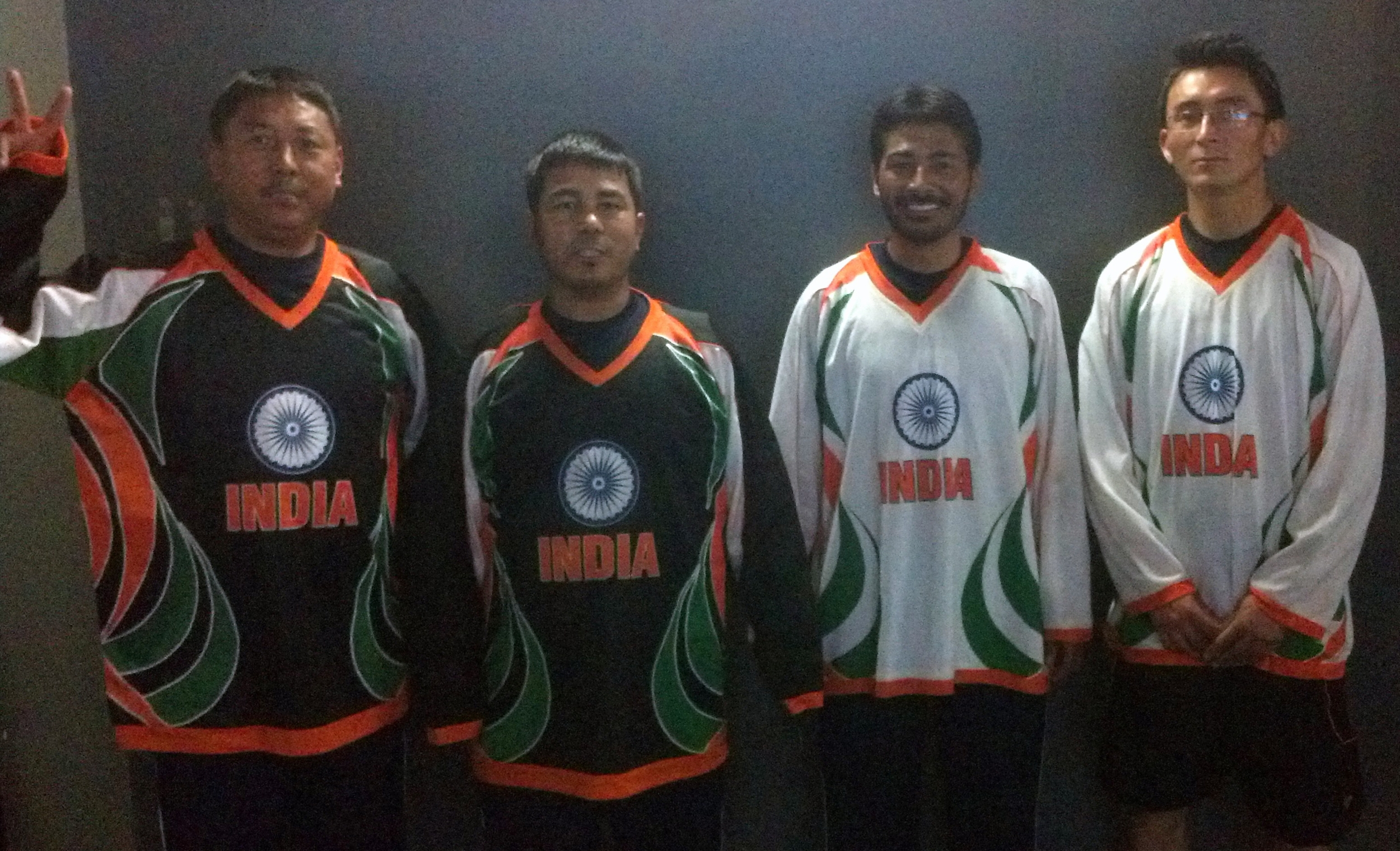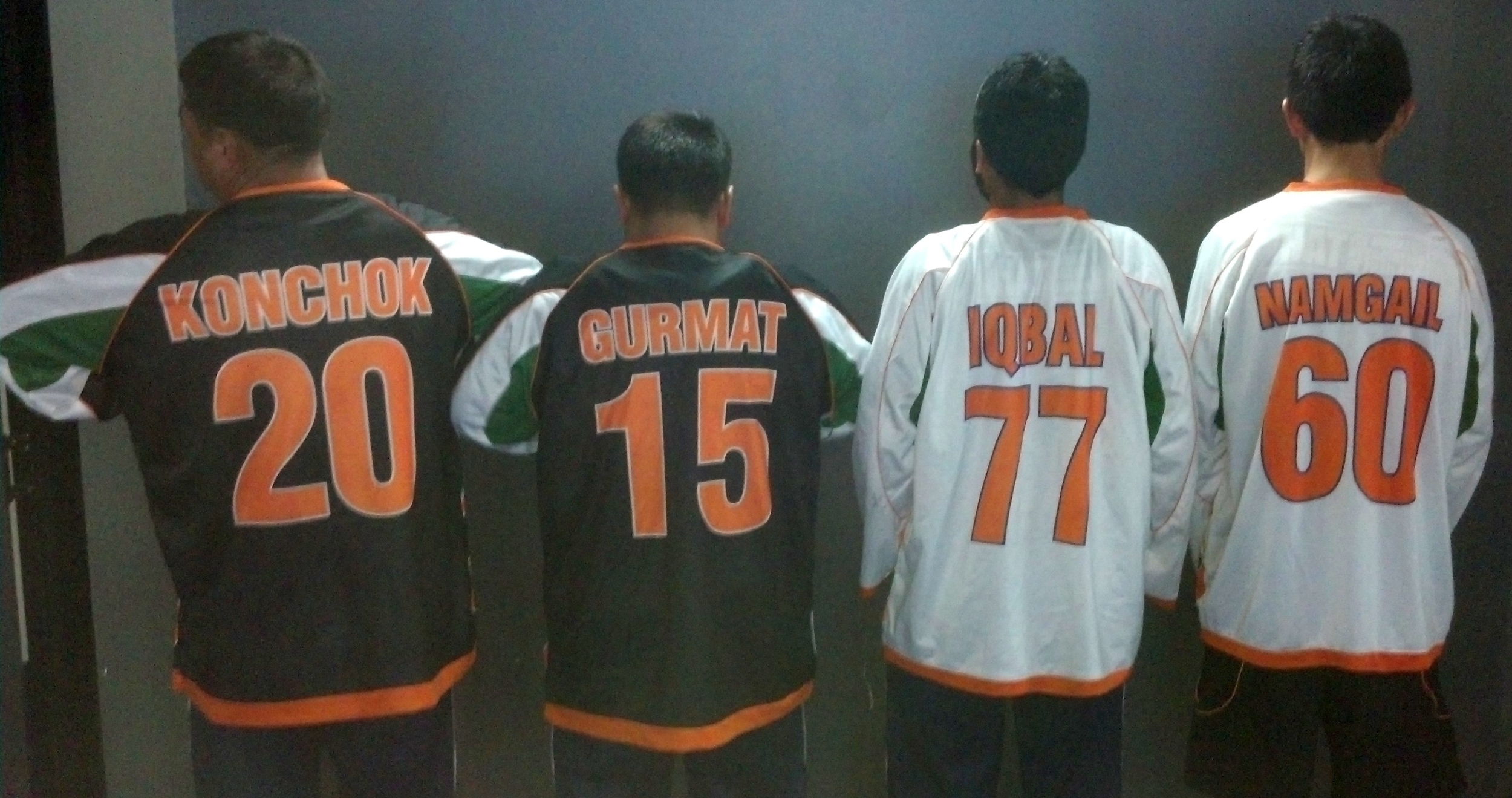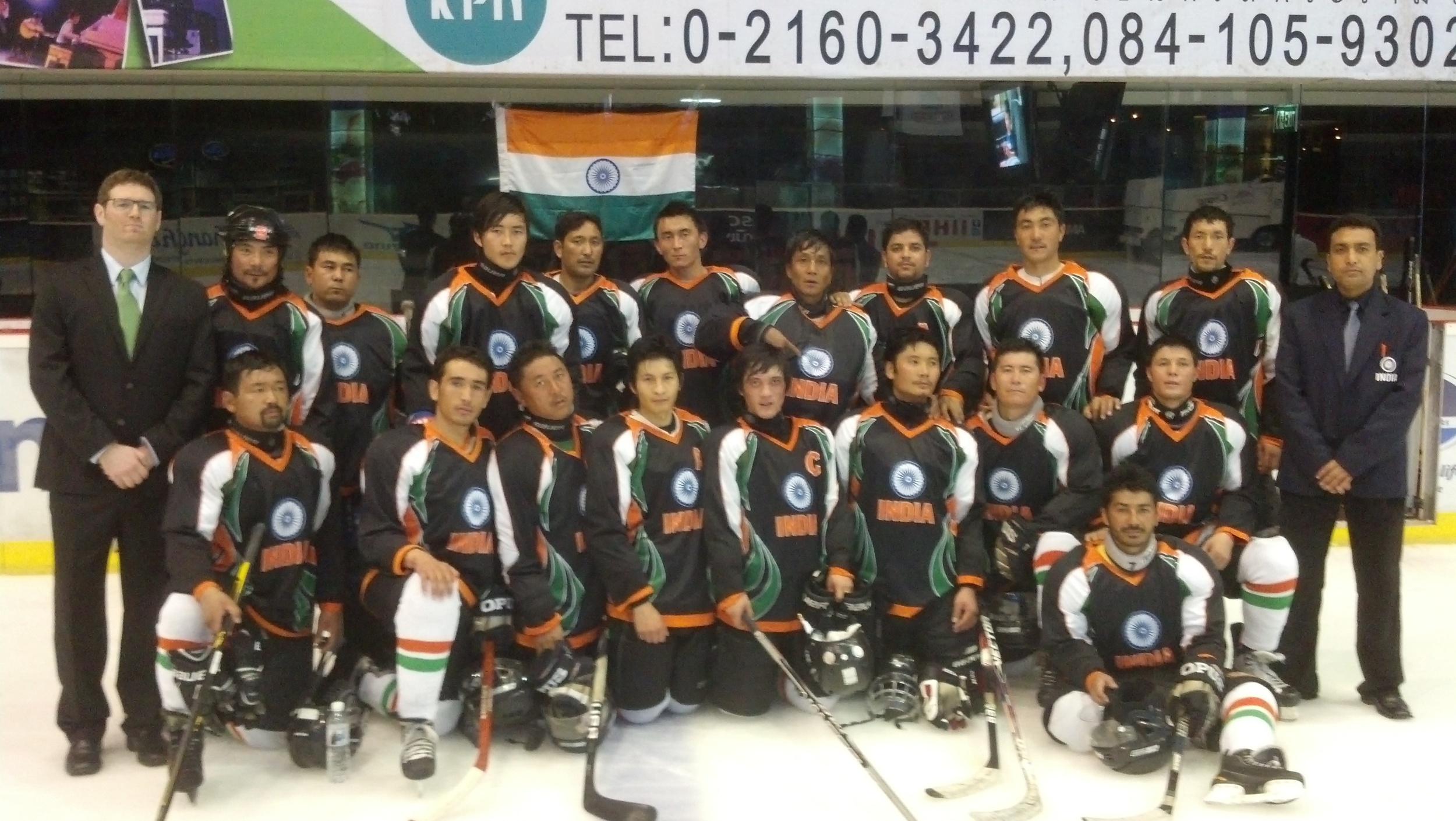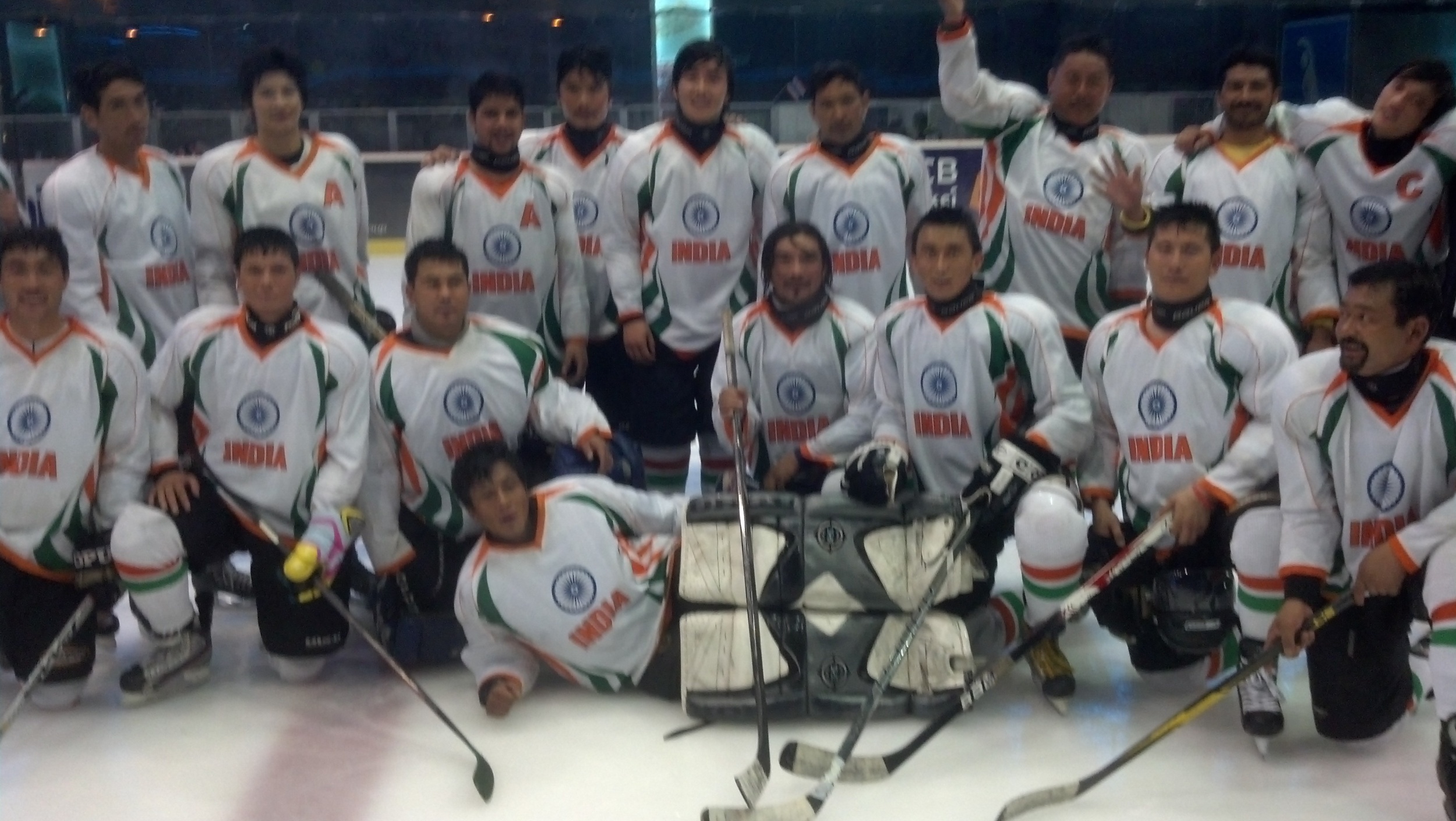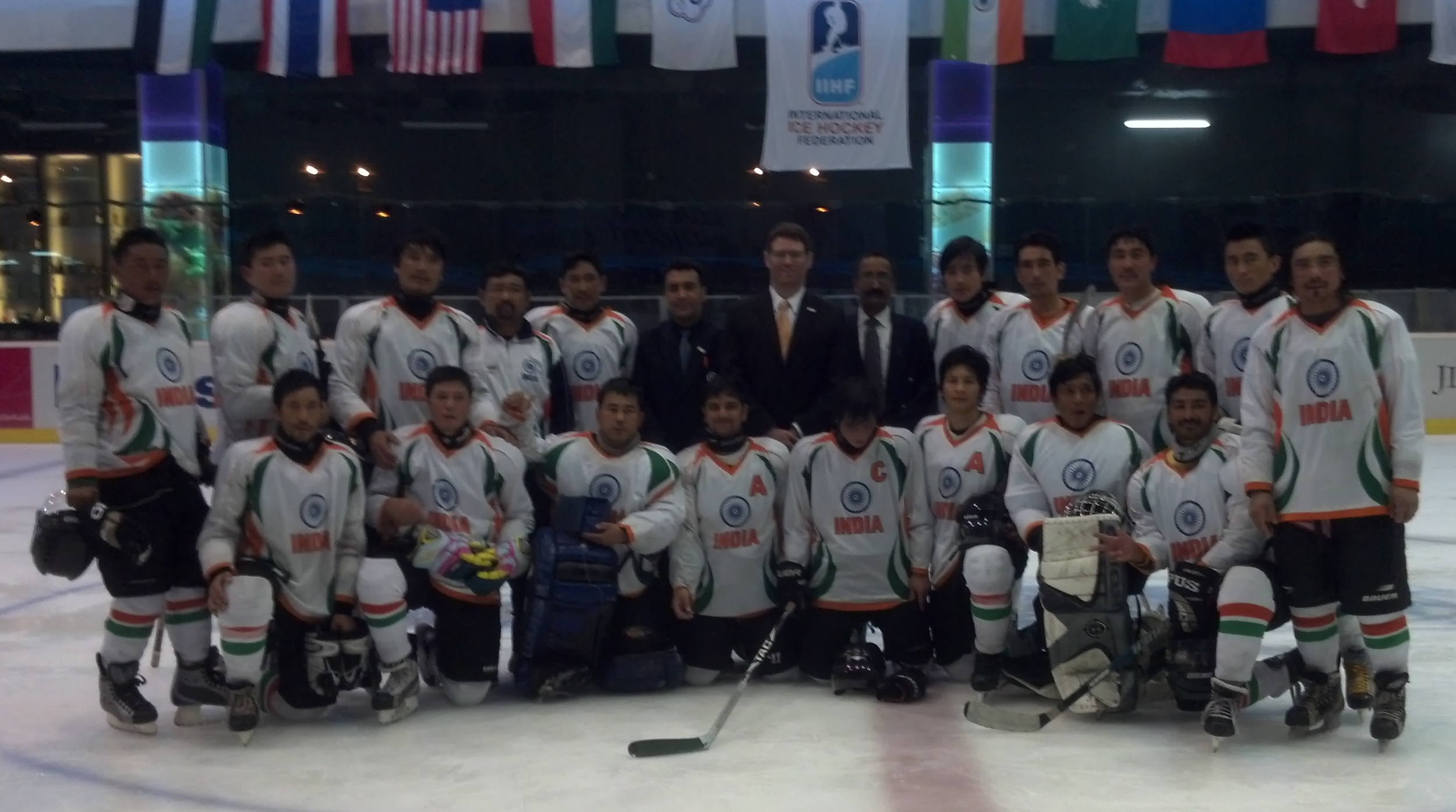So, here we are, at last. Morning time, before puck drop. The tournament was organized in two divisions, A & B.
A DIVISION
- Thailand
- Malaysia
- Mongolia
- India
B DIVISION
- United Arab Emirates
- Hong Kong
- Singapore
- Macau
I assume the intention was to have the groups divided evenly in talent. I don’t know if that’s how it played out.
Our fate in this tournament was sealed long before we even set foot on the ice. There was going to be no Miracle. We weren’t going to pull together like Little Giants, Bad News Bears, or Mighty Ducks. We were going to get dominated. But we were going to do it gracefully.
If losing was inevitable (it was, there’s only so much determination that you can have, but if you’re over-matched, it’s that simple), we were going to make sure we skated hard every second of the game. We’d continue to huff and puff, and if we didn’t blow the house down, then we’d develop short-term memory loss and go out there and do it again.
If we get scored on and beat while playing our best hockey, doing everything we possibly could to win the game, constantly improving, then this would be an incredible achievement, and a great stepping stone for the India Ice Hockey program.
GAME 1: INDIA VS. THAILAND
The first game of the tournament was India vs. Thailand. Being the first international game for the guys, there’s no denying the tension that they’d feel. I felt it in high school hockey playoffs; they’re representing their country (although at the lowest internationally sanctioned hockey tournament, but still). They had to play on a rink nearly twice the size of what they’re accustomed to, with a flat ice surface, boards, and an opposing team that is big, strong and talented.
The night before, as I was reviewing the IIHF Rule Book with the captain of the team (I had read through the whole book on the flight to Dubai & bus ride to Abu Dhabi), the captain gave me his opinion on which goalie should start. After watching them in practice, I felt otherwise, and started the other goalie. He played pretty well. The first period went much better than I expected. I definitely think it helped that Akshay had arrived from his Europe business travel and came onto the bench (I had no assistant coach, as the one I wanted to join the team from Ladakh didn’t get his passport processed in time), speaking to the team in Hindi, the 2nd language for many of them, especially since I speak faster as I get more riled about during the game (only natural). He was able to communicate what I wanted them to do, in a way that was a little more understandable, and was a much cheerleader on the bench! Nonetheless, 3-0 by the end of the first.
First intermission was about staying focused, skate hard, check some people (they were obviously physically intimidated, which really just amounts to emotional intimidation), and stay in their positions. This would become the theme message of the entire tournament.
They were clearly overwhelmed, intoxicated by the experience, and were playing like they were drunk, stumbling around the rink, getting nervous, not doing anything that we had practiced or discussed repeatedly. 7-0 at the end of the second.
For no good reason, the other goalie decided to put himself into the game. I let that go, as it didn’t hurt to give him some early experience, as we were already down by a large margin. Unfortunately, he didn’t hold up very well. Final score, 14-0.
We did a lot of things wrong in this game, skating around the ice like headless chickens. We discussed this during and after the game, with Akshay providing additional translation and support. More than anything, it was the mental mistakes that were holding us back. Sometimes thinking too much is no different than not thinking enough, and no matter if they were completely clueless, or thinking about every little thing, they were not focused on staying in their position, checking the player with the puck, skating hard at all times, making short passes, not letting players behind them on defense, making line changes properly, or even lining up for the face-off properly.
Some of these things are more complex than others, but not by much. It’s not like these were strategies even, they were just general points. I can understand a fast player skating by you sometimes, but when they are a half a zone away, and you are attacking the guy with the puck, it’s inevitable on the first, second or thirtieth time that this player will just chip it forward to the guy waiting at the other end of the rink, ready to score on a breakaway. The learning curve wasn’t sloping upwards. If I can recall my trigonometry and calculus, this would be equal to zero, or infinity. I don’t know. I cheated my way through most of 11th & 12th grade math (pre-calculus, College Calculus, A.P. Calculus)…seriously. Whatever the mathematical value, they didn’t improve within the 1st game, but maybe that was from their jitters. Hopefully game 2 would be better.
GAME 2: INDIA VS. MONGOLIA
Just a few years ago, Mongolia was a struggling organization. They have definitely improved, but were by no means the best team in the tournament, more like bottom half. Their players had an air of cockiness though, which could be harnessed and make them better, or can get out of control, and hinder their growth.
The pre-game speech identified some of the keys to being successful on the ice, coming out like a group of gang-busters and skating as hard as they possible can, fore-checking the puck incessantly and maybe even use their shoulder pads a bit and throw a body check now and again.
I started our other goalie for this game (the one that forced his way onto the ice in the 3rd period of the 1st game). The guys came out like gangbusters, and skated hard throughout the game. They checked a decent amount, had a few scoring chances, and even changed lines much better. Overall, it was an incredible improvement in energy from them. If only they were able to manufacture a goal!
At one point, a reporter leaned over the glass to ask to do an interview, to which I responded, “How about after the game, I’m a bit busy coaching right now”.
Our goalie made some decent saves (and some weak ones), but when you are constantly being peppered with shots (picture Goldberg from The Mighty Ducks, when he’s tied to the posts and they fire shots at him endlessly…only to leave him tied to the net), you can’t help but let in a few. Or 10. Nonetheless, this was our best effort in the tournament. Final Score, 10-0.
Akshay helped with the translation again on the bench and in the locker room, and wished the team all the best, as he was heading back to India to take care of more business. He and I completed a couple of interviews with the press, and he was on his merry way. I wish he could’ve stayed throughout the tournament, because I definitely think the team responded well to him, especially since they understood what he was saying. His parting words (well, kind of), were to “speak slower”. In actuality, they were more like “good luck!”, but the speak slower was a key point in there, which I acknowledged, but in a manner typical of feedback, I had to give my side, which was totally legit: in my excitement of hockey, I lost focus on how to speak, and just said whatever came to mind, but I will definitely try to work on speed of speech.
The post-game speech was generally positive, lauding the hard work by the goal scorer, and the others that “threw the body” (checked people), but still addressing the need to stay focused, stay in position, and keep the shifts short and accurate. Minor details.
That night was unremarkable. The team stayed to watch the games, I went back to the hotel to do more work, and relax.
GAME 3: INDIA VS. MALAYSIA
With 2 games under our belt, with a vast improvement between the two, I was confident that the team would come out like gangbusters the next morning, and really work hard on the ice. And you know what? They did! They were fired up, and knew that if they played flat hockey like they did in Game 1, there was no way they could succeed.
I started our first goalie for this game (the one I started in the 1st game), trying to give them equal playing time. The team came out working hard, and some players really rose to the challenge of skating hard. As promised, if they worked hard, they’d get more playing time, if they didn’t, they’d sit. There is no star on the team, unfortunately, but the difference was pretty big between the better players and the incredibly poor players, including a few that not only couldn’t skate, but apparently couldn’t think either. A bad combination, to say the least.
The hard work from the previous game and this one paid off! In the second period, while shorthanded, one of our better players fore-checked hard in the offensive zone, pressuring the goalie, who had come out of the net to play the puck - as his defense was a bit lazy getting back into their zone. Our guy rushed hard from the left side of the zone (if you were on the ice, attacking), and the goalie shot the puck into his chest, which fortuitously bounced into the empty net.
It was a great moment.
I had always wondered whether I would be emotional when I’m not the one playing. As it is, from the time I was a teenager through today, when I score goals, I don’t celebrate very often. I followed the Brett Hull mantra of put your head down and skate back to the face-off circle (although there have been a few rare occasions of celebrations, but nothing evoking Ovechkin’s 50th). In this situation, with the India goal, I definitely did a fist pump with a cheer, and was elated for the team. It was hard work that got the goal, and while it wasn’t pretty, it was well earned. 4-1, End of First Period.
The rest of the game was pretty unremarkable though. The guys weren’t able to sustain the pressure as tightly, and were running all over the place in the defensive zone, allowing players to stand alone in front of the net (I wonder what will happen when that happens?), chasing them around the defensive zone (picture chasing chickens in a pen), and letting players get behind them while “defending” the neutral zone (between the blue lines). This resulted in a handful of scoring opportunities, which Malaysia capitalized on. Final score, 10-1.
INTERLUDE
After the game against Malaysia, they invited me out to dinner with the team, which I graciously accepted. I had noticed from the onset that their coach (a Canadian) was a bit distant with me, which may have something to do with the email I sent to the organization to offer my coaching services.
About that…
- I had no idea what the coaching situation for the team was/is when I sent the email. Hence the inquiry email.
- I was not soliciting to become the coach of the national program. Quite the contrary, I was offering to coach at any level, especially the kids. I definitely don’t want to step on any toes.
- I don’t actually want to be the coach of any national team. The purpose of this program is to help anyone and everyone that is looking to grow their hockey program, imparting the values of the game and improving the lives of the players involved.
With that in mind, we went out and I tried my best to make conversation, showing that I’m not trying to steal his job. Naturally, we spoke about hockey. At one point, I was chatting with a group of his players, discussing some hockey from the tournament, in particular the game between Thailand and Malaysia from the evening before. This game was rough. Unnecessarily rough. When people don’t know hockey, the first question they inevitably ask is, “isn’t hockey violent?” My reaction is always the same, “No. Hockey’s physical, not violent,” which I view as a vital distinction. The point of checking is to get the puck, or to get someone off the puck and take them out of the play. Not to hit someone as hard as you can, which can cause injuries, and it did. That’s all I said. With the tag at the end, “…and you [pointing to an injured player] suffered because of it.”
Apparently I stepped over the line, because their coach got annoyed and responded with “I can coach my own team. The other guy got injured too.”
I don’t know about you, but in a moment of excitement of talking about hockey, and sharing sympathy for an injured player, I didn’t think I had done anything wrong. I knew the other player got injured too, which was my initial point. There were multiple injuries, with players being taken off the ice by stretcher because of the unnecessary roughness. I also didn’t tell them how to play hockey, which I would define as coaching.
To add to that, this is a friendly tournament, with players that are nowhere near NHL careers, and a little bit of hockey sense can go a long way.
Whether I was right or wrong, I fought through the awkward moment at the dinner table, attempting to uphold the values I hold so dear to the sport (accountability, honesty, selflessness) and apologized. Twice. To no avail. He pretty much disregarded the apology both times, and we didn’t speak to each other for the rest of the tournament.
Sorry to sour the moment.
But in some ways, it doesn’t get much better.
GAME 4: PLAYOFF ROUND: INDIA VS. SINGAPORE
Singapore is a good team with an interesting story. Their ice rink closed down, and although they got to practice once in the tiny rink that Malaysia uses inside a mall, they spent their whole time practicing inline hockey. And it worked!
Just a few years ago, they were also a struggling organization, but their coach/manager/president (an American) had improved their program, and they had some talented players, comparatively speaking, of course.
For India, this game was our low point. The first period was sloppy, in every way I’ve identified, and then some, and in the first intermission, I begged the team to focus, and listed to me (I was consciously speaking slower and clearer, with simpler words).
It is getting redundant to say this, and I wish I could give you better details, but this time they didn’t even come out hard, and got worse as the game progressed, making the same mistakes they had in the first three games: bad line changes , allowing forwards to stand alone in front of the net, not passing, not skating hard, letting forwards behind them, attacking the puck carrier when they are the “one” in a 2 or 3-on-1, and still didn’t line up in the right spot for face-offs.
In the second period, they continued to make terrible mistakes, at one point getting a too-many-men penalty because one of the players made the executive decision to go on the ice even though I told each line who was going out next, by calling out their line number, and patting them on the back, and reiterating it many times, all game long. He didn’t even come back when we (mostly I) started yelling.
I had one player skate a 3 minute shift, after I called him off multiple times when he was near the bench.
That was it for me. I’d had enough. Time for a new strategy.
It was only 5-0 at the end of the 2nd period, mostly because of our goalie, but also because of some missed opportunities for Singapore. I was sure they would score more in the 3rd, so I went into the locker room with a very different mentality.
This is practically verbatim:
“OK. Since you guys aren’t listening to anything I say, there’s no point in me talking and coaching. I am not saying a word next period. You figure out your lines, you figure out when to go out, since you already do it on your own. Good luck,” and walked out of the locker room.
I spent the whole period in the corner of the bench, watching the game, and what I saw was even more disheartening. Singapore let up.
They spent the 19 of the 20 minutes of the 3rd period (yes, I counted), passing the puck around in our defensive zone. They had multiple “scoring opportunities”, including break-aways, but didn’t take a single shot.
Within 30 seconds of the period starting, I even told the coach to keep it coming, because there was a lesson in humility and hard work that needed to be learned by Team India, but they didn’t shoot.
There are a couple of conflicting opinions about this. The selfish opinion (not for me or India) is that Singapore has very little opportunity to get a chance to be so dominant, and work on passing for such a long time. It’s actually a very good puck control and power-play drill (even though we were not short-handed if you count the players on the ice), and a great opportunity. I don’t believe that was the motivation, but I could be wrong.
On the other hand, I have always been of the belief - and from discussions, I know I’m not alone - that you play the game, no matter what. If you are better, then you score more goals. If you are worse, then you get scored on. That’s the spirit of the game. It’s more insulting to do anything to the contrary, as it shows a lack of respect for your competitor. To an educated fan, player, coach or official, it is dishonorable and says “I think so low of your ability that I’m just going to play around.”
I was upset that they did this, but it was just another teaching point for the team. A point that some comprehended, and others could never. Final (official) score, 5-0 (should’ve been 15-0).
I reported back to Akshay with the score, after he emailed me hearing a rumor that we won. When I told him that we won 5-0, I added the disclaimer that while it may be important for the public to see the improvement in score (buh-bye to that theory), he shouldn’t feel proud about it, due to the circumstances.
GAME 5: RELEGATION GAME: INDIA VS. MACAU
I had hope for this game, playing against the 2nd worst team in the tournament (no disrespect intended, but the scoreboard proved it). I thought we could at least score a few more goals and prevent a disaster. Unfortunately, that would not be the case. The team looked defeated the moment they went onto the ice. I tried a different strategy, not only returning to positive reinforcement, but once again appealing to their pride and determination.
That failed. We got shut out by the 2nd worst team. Final score, 8-0.
The Finals were UAE vs. Thailand, definitely a quality match. UAE went through Hong Kong to get there, but only because the rounds were structured in a way that prevented the higher ranking teams in the division to play the lower ranking teams, i.e. 1 played 2 and 3 played 4 in the first round for each division.
Thailand came out with the lead, but their poor passing and defense got the best of them. UAE, which had an abundance of passing, as well as a talented goalie, kept sustained pressure, and capitalized on mistakes, coming from behind with 2 quick goals in the middle of the 3rd period. With a massive crowd in attendance (and manufactured cheering, with officials in the stands leading chants), and an empty net goal to seal their fate, they defeated Thailand 5-3.
The Thai Ambassador to the UAE and a high ranking Sheikh of the UAE were both in attendance.
FINAL THOUGHTS
During the tournament, a few things became clear:
- Abu Dhabi Tourism went above and beyond - possibly setting the gold standard - as the host. They provided buses, cars (mostly new Audi sedans), and the hotel (a 5 star***** Hilton) complementary. Their staff was pretty accommodating, although they had to be prodded a little bit to get your way (or maybe just my way), and outside of some communication issues, really did a great job.
- The Abu Dhabi team had an unfair advantage of practicing every morning, while the other teams only had 1 practice. I know they were the host team, and it’s a (relatively) friendly tournament, but that’s a bit unfair.
- The best teams were far and away better than their competition. Teams like Thailand, Hong Kong, UAE, and Malaysia (to an extent) were much better than Mongolia, Macau, Mongolia, and India.
- It will be difficult to continue this tournament if the future organizers don’t meet the standards of the UAE. The costs that they covered were tremendous for developing organizations like India, and could leave out the teams trying to improve at the game.
- There apparently was a meeting that discussed setting minimum competency to compete in this tournament. This is concerning on a few fronts. 1) I was never notified of the meeting, if it took place. 2) This tournament is developmental at best, with no official IIHF standing other than a stamp of recognition (more or less), until it is connected to the Div III championship. 3) It singles out teams like India, which is no different than the other teams in the tournament just a few years ago. Who knows if this actually happened, but if it did, it’s in poor taste all around.
- If the Indian hockey system (at all participatory levels) stays at the current level, there will be no chance of India becoming competitive in hockey. That being said, if the government is more receptive to supporting the program, and the people that are currently on the front lines in Northwestern India change their attitudes and behaviors, there is potential for the program to greatly improve and succeed. Will it happen? I am trying to make it so, and I truly hope it does, but I need help, from within, and from everyone in the hockey community. I consider hockey to be the finest example of an international sport, and it will get better as the lower level teams improve, especially with the support of the better countries and hockey lovers around the world. Scratch that, you don’t need to love hockey, just love how important it is to the people involved in the game, and help share happiness through hockey!
IIHF Article on the Tournament
http://www.iihf.com/home-of-hockey/news/news-singleview/hash/b023a754ac/article/uae-wins-challenge-cup-of-asia/187.html
